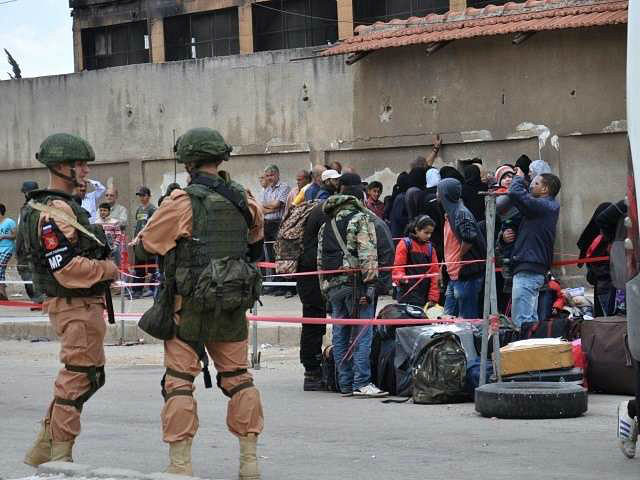A United Nations investigation found Russia’s much-ballyhooed plan for “de-escalation” zones in Syria has produced woefully inadequate results in a report delivered to the Human Rights Council on Wednesday.
“The Independent International Commission of Inquiry told the U.N. Human Rights Council that fighting around the central province of Homs, near Damascus and in the southern city of Daraa has continued – despite the deal brokered by Russia, Turkey and Iran in May,” reports the Associated Press. “Only in the northern Idlib province and western Aleppo has there been ‘discernible reduction’ in violence, said the chair of the U.N. commission, Paulo Sergio Pinheiro.”
In another dismal note, the inquiry found that violence in the Daraa province has escalated recently.
“Whether it be the unrestrained use of airstrikes against residential neighborhoods, attacks against doctors and hospitals, or the use of suicide bombers that deliberately target civilians, fighting remains brutal in purpose and reprehensible in method,” Pinheiro said.
He added that the de-escalation plan was failing to achieve one of its most important goals, securing improved humanitarian access to civilians caught in the fighting. In fact, he said the U.N. has only been able to make one humanitarian deliver so far this year.
“Time and time again, warring parties and influential states have failed to capitalize on the opportunities presented by the respites from hostilities,” Pinheiro lamented.
In a remarkable demonstration of what might be charitably called glass-half-full optimism, Russian propaganda site Sputnik News spun the report as praise for the de-escalation plan as a smashing success because it managed to achieve “discernible reduction in levels of violence” in one of the four zones.
One problem with any conceivable de-escalation strategy for Syria is that conflict around the Islamic State stronghold of Raqqa is steadily escalating, and many of the participants would like to escalate conflict with each other.
The danger that some of the forces arrayed against ISIS are hostile to each other has been highlighted by the incursion of militia forces allied with Damascus into the de-confliction safe zone around the city of At Tanf on the Iraqi border, where U.S. troops have been training Syrian rebel forces. American forces have been obliged to use deadly force against these militia fighters on several occasions.
Syrian rebels say the U.S. is expanding its presence in At Tanf and have set up a new base at Zakf, about 50 miles away. The U.S. military denied the report of a new base but said American troops do occasionally establish temporary camps to train “partner forces.”
However, defense officials told CNN on Tuesday that the U.S. military has moved a long-range artillery system to At Tanf, greatly increasing American combat power in southern Syria. A similar system was previously deployed in northern Syria to support the Kurdish-led Syrian Democratic Forces.
The artillery system is called HIMARS, or High Mobility Artillery Rocket System. As the name implies, it can be relocated rapidly – it looks like a dump truck with a rear section that flips up to launch missiles.
One of the officials who spoke to CNN stated that moving HIMARS was “a response to actions by pro-regime forces, who have been deploying their own artillery near the perimeter of the 55-kilometer ‘de-confliction zone’ surrounding At Tanf.” Another source for the report disputed this characterization, however.
Interestingly, some of CNN’s sources argue that a significant source of tension in the area is “pro-regime militias backed by Iran,” which are busy establishing a “strategic overland route from Iran to the Mediterranean coast.” An inherent flaw in every de-escalation proposal floated for Syria is that many factions are at work, pursuing a variety of interests, and they have different ideas of what the endgame for the war-ravaged country looks like.

COMMENTS
Please let us know if you're having issues with commenting.